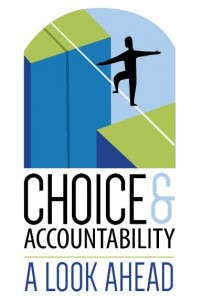
Editor’s note: This is the fifth post in our series on the future of parental choice and accountability.
by Chad Aldis
The last 20 years indicate that simply creating a school choice program does not guarantee widespread improvements in student achievement. Just come to my home state of Ohio. Despite a rapidly growing number of students exercising school choice (in its variety of forms), statewide achievement on NAEP has been largely flat for a decade, and 40 percent of the state’s college-bound high-school graduates require remedial coursework as freshmen.
The next generation of accountability should focus on identifying and improving upon those areas where the education arena is not operating as a well-functioning marketplace. Here are some areas of focus to get us started.
Ensure there isn’t a monopoly
In order to utilize market forces to drive quality, it’s essential that there isn’t an all-powerful monopoly that dominates the market. The growth of school choice in many places has weakened the monopoly that traditional school districts have enjoyed for generations, but there are still too many places (especially suburbs and small towns) where the only publicly funded educational option is the assigned district school. For consumer choice to drive quality, it’s essential that public policy enable the number of school options to continue to grow and ensure that all students have a variety of choices. While private school choice options will undoubtedly be a part of this growth, the choice ecosystem must continue to expand and should include inter-district and intra-district open enrollment, virtual and hybrid schools, and charter schools whenever possible.
Level the playing field
While additional educational options are undeniably important, school choice policy must be done in a way that levels the playing field, particularly when it comes to funding. The battle for equitable funding is a given and must be fought for. Long-term, the education system should move toward a weighted student funding system where the money follows the child. The politics of passing school choice programs has given us a host of choice programs where the traditional public school district keeps a significant amount of the per-student funding for those who exercise a school choice. This lessens the market effect as it ameliorates the need for the district to change and improve as the true cost of the parent’s dissatisfaction isn’t felt by the district. If the money followed the student to the new school, the school of choice would be able to compete on more level terms and the traditional public school would have even more reason to improve its services to keep (or win back) students.
Make high-quality information widely available
An efficient market requires that consumers have high quality information to make purchasing decisions. One of the benefits of No Child Left Behind (NCLB) has been the increased amount of school performance data. Parents have never had more information available – ranging from proficiency and value-added data to overall school letter grades – in order to choose the right school for their child. That being said, the quality, content, and ease of use of the information available can still be improved. There isn’t a perfect delivery system (yet) of this information, and state departments of education historically have done a poor job of presenting user-friendly information to parents.
All is not lost though, as GreatSchools seems to be on the right path.
Specifically, take a look at what they’ve been able to accomplish in Detroit with the help of local partners. Parents in Detroit now have access to information on student achievement by school AND on school climate. This is critical, since we know academic achievement is only one of the factors parents consider when choosing the school for their children. There is also a mechanism at GreatSchools, similar to product ratings at Amazon.com or service ratings at Angie’s List, for parents to provide comments on the school. This feature is still woefully under-utilized, but imagine a future where word-of-mouth recommendations are captured for all to see in real-time. For consumer choice to have the transformative effect on quality that it’s had in so many areas, parents in every city are going to need a similar level of high-quality, trusted, interactive information.
Lessen the impact of externalities
We’ve recognized for a long time the cost to society of our students receiving a poor education. Those costs include, among other things, lower lifetime earnings, higher incidence of crime, and a greater need for social programs. While society is clearly impacted by the cost of a poor education, schools (public or private) delivering the education do not typically bear those costs. This is very akin to an externality in a market, and we should consider how best to address it. A tax or penalty on dropouts or low academic performance, similar to penalties used in some markets, probably isn’t a good fit for education.
Another option might be to establish a performance floor. If a school performs below that floor, regardless of school type (including traditional public schools), it would no longer be able to accept public funding. This wouldn’t prevent academic failure, but it would place a cost directly on the school for continued low performance. It would also ensure the same schools wouldn’t continue to poorly serve students year in and year out.
Establishing the floor would be tricky indeed. First, there would either need to be agreement on using a state assessment or a mechanism that would allow comparability between various nationally-normed referenced tests (NNRT). Given the ongoing battles on the issue of state assessments and the acknowledgement that assessments can drive instruction, a broader accountability system that includes schools from all sectors would probably benefit from the flexibility afforded by using NNRTs.
The next challenge would be to set a performance level where it was clear, with mathematical certainty, that students attending the schools were performing significantly below similarly-situated peers. This should include both proficiency and growth measures to get a full picture of the impact each school has on student achievement. It’s not intuitively clear where a floor should be set, but given the automatic closure provisions in place in the charter sector, it might be reasonable for the floor to result in between 1 and 4 percent of schools each year being affected. At the end of the day, the floor should function to remove the very lowest performers without preventing parents from having meaningful educational options.
***
We’ve engaged in administrative and rule-based accountability for decades, and we’ve seen some modest improvements, especially for students who had been historically underserved. This isn’t suggesting that our current accountability systems disappear—certainly not overnight. We’ve also experimented with a school choice marketplace, but we’ve done so timidly while turning a blind eye to real factors that hamper the efficient workings of the market.
As we move toward 2025, we need to shift our focus to facilitating, not controlling, the smooth operation of our burgeoning school choice marketplace. I’ve described a few areas that could be improved, and surely there are others. If we fail to recognize and respond to the opportunity presented by the increase in educational options, this—our last best chance to empower parents and inject market forces and market accountability into our educational system—may not present itself again.
Chad Aldis is Thomas B. Fordham Institute’s Vice President for Ohio Policy and Advocacy.
Coming Monday: Thomas Arnett, research fellow in education at the Clayton Christensen Institute for Disruptive Innovation.



[…] Aldis, Vice President for Ohio Policy and Advocacy at the Thomas B. Fordham Institute, has a worthwhile column at redefinED discussing better ways to facilitate the school choice marketplace in order to provide quality options for parents and students. He suggests three areas of focus in […]